
Join our community to see how developers are using Workik AI everyday.
Features

Automate Theme Development
Generate Ghost themes with Handlebars, optimized for Tailwind CSS and customized to reflect your brand using AI.

Integrate APIs Easily
AI configures Ghost API endpoints effortlessly, enabling seamless integration with Next.js or Gatsby for dynamic and efficient frontends.

Optimize SEO & Performance
AI ensures SEO-optimized code with features like lazy-loading and AMP, boosting Ghost CMS speed and search visibility.

Streamline Content Migration
Automate SQLite or MySQL database setup with JSON or CSV support, facilitating smooth and efficient content migration to Ghost.
How it works
Create a Workik account or sign up with Google to access Ghost-specific setup tools.
Import your GitHub, GitLab, or Bitbucket repository. Set your front-end framework like Gatsby or Next.js and configure Ghost API keys, routing, and theme settings for a custom setup.
Generate Ghost custom templates, dynamic routes, and content models with AI, including SEO settings, performance boosts, and debugging support for smooth CMS and front-end integration.
Invite your team to manage updates seamlessly, then deploy to DigitalOcean or Vercel with one click.
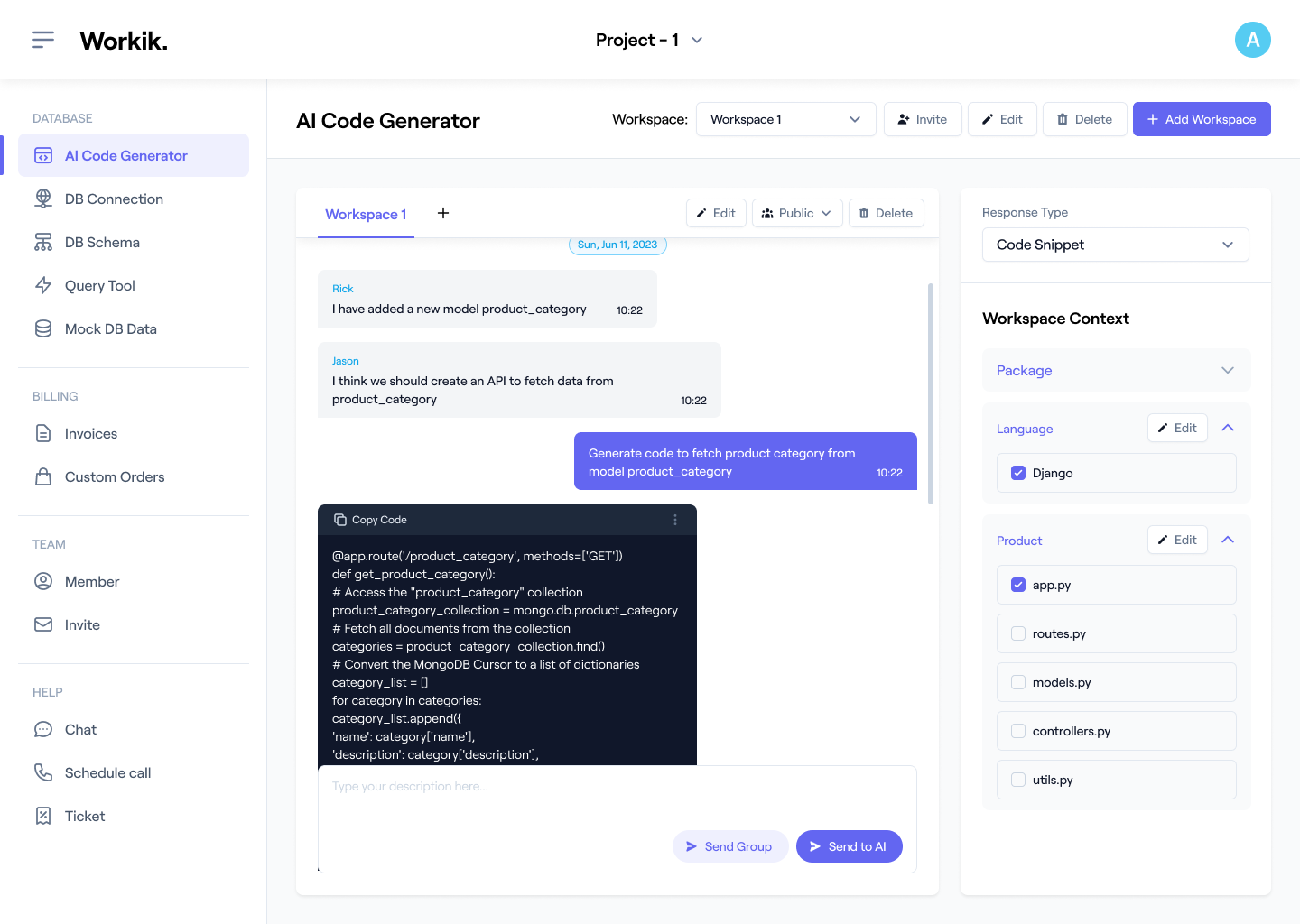

Expand
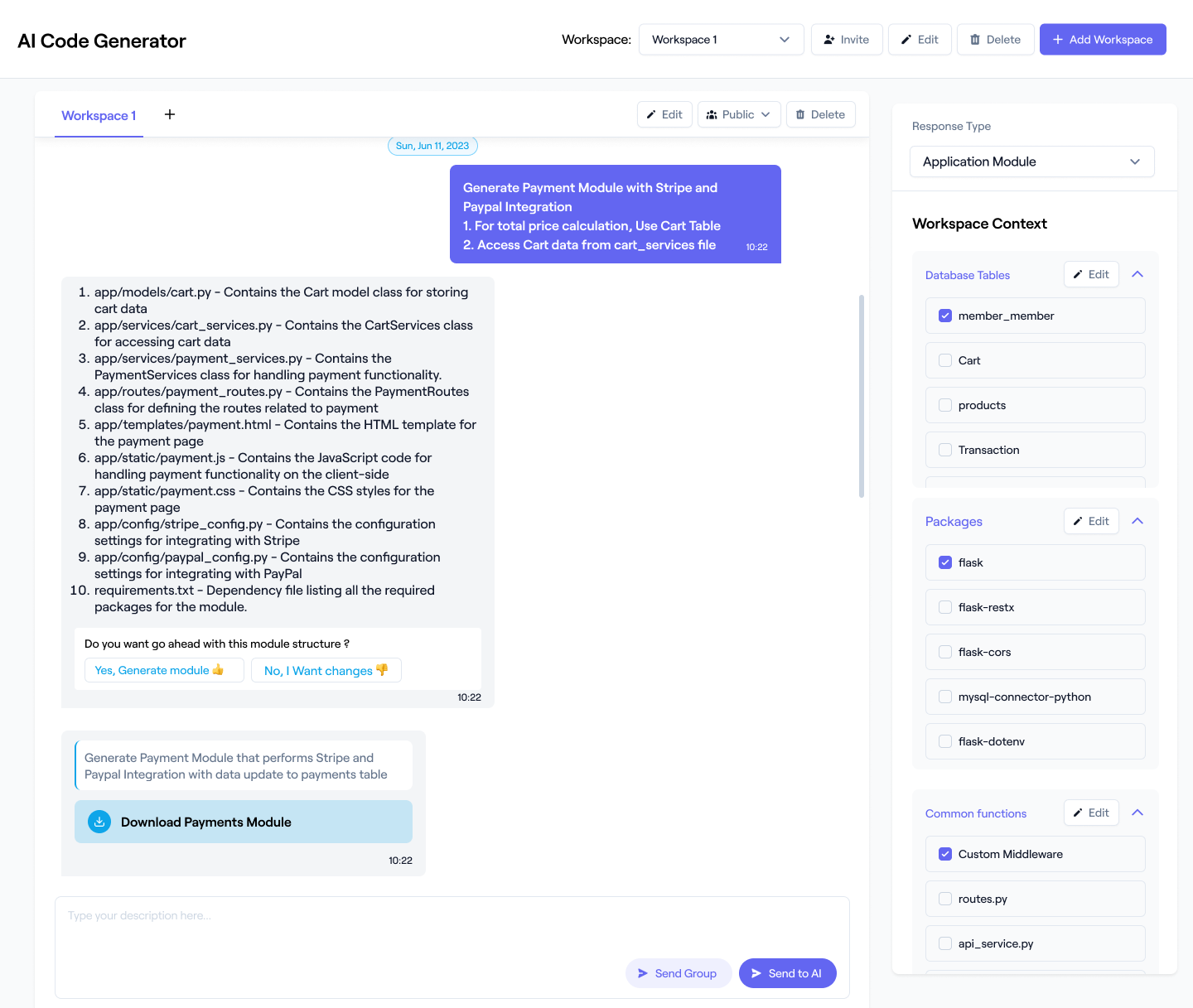

Expand
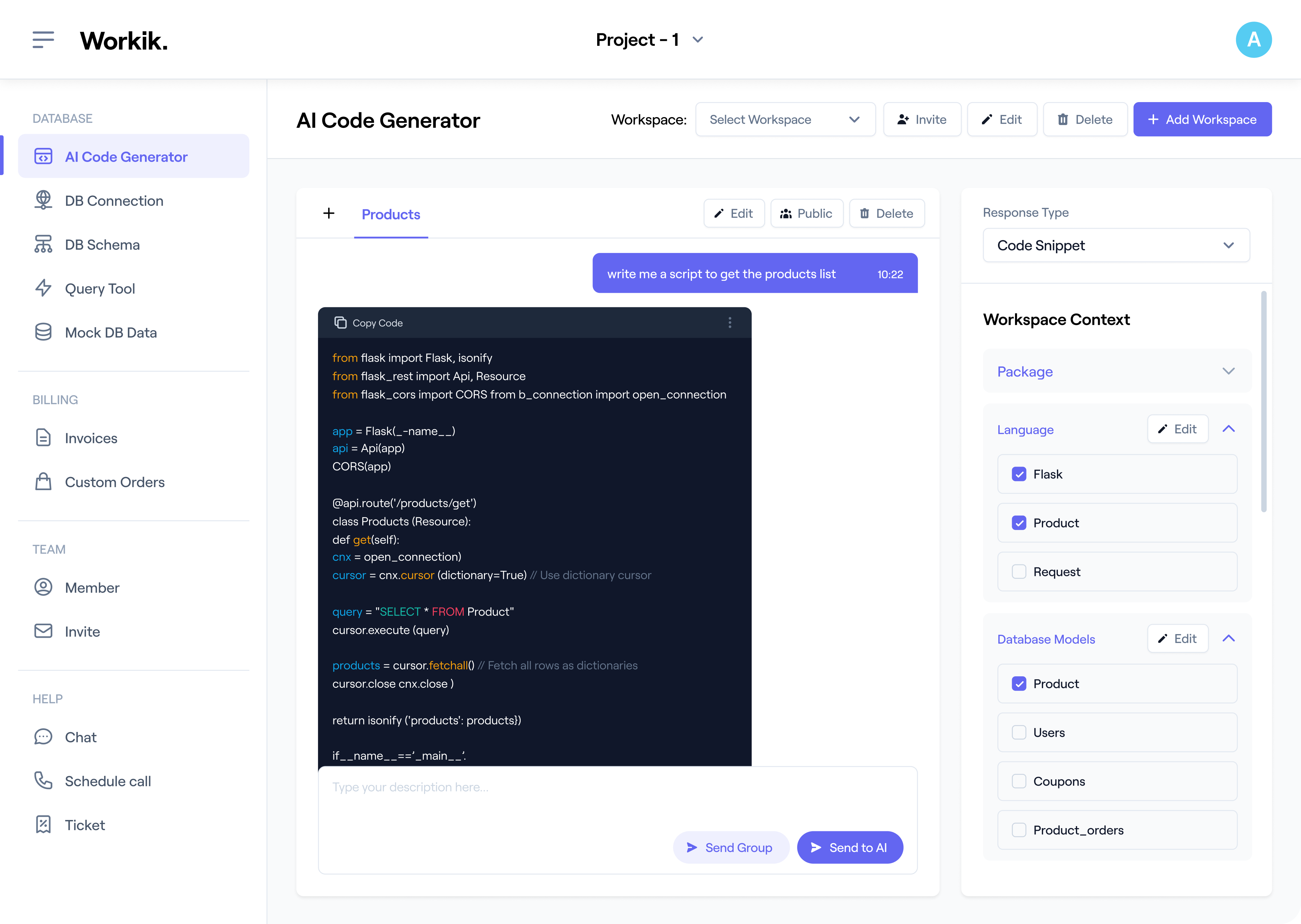

Expand
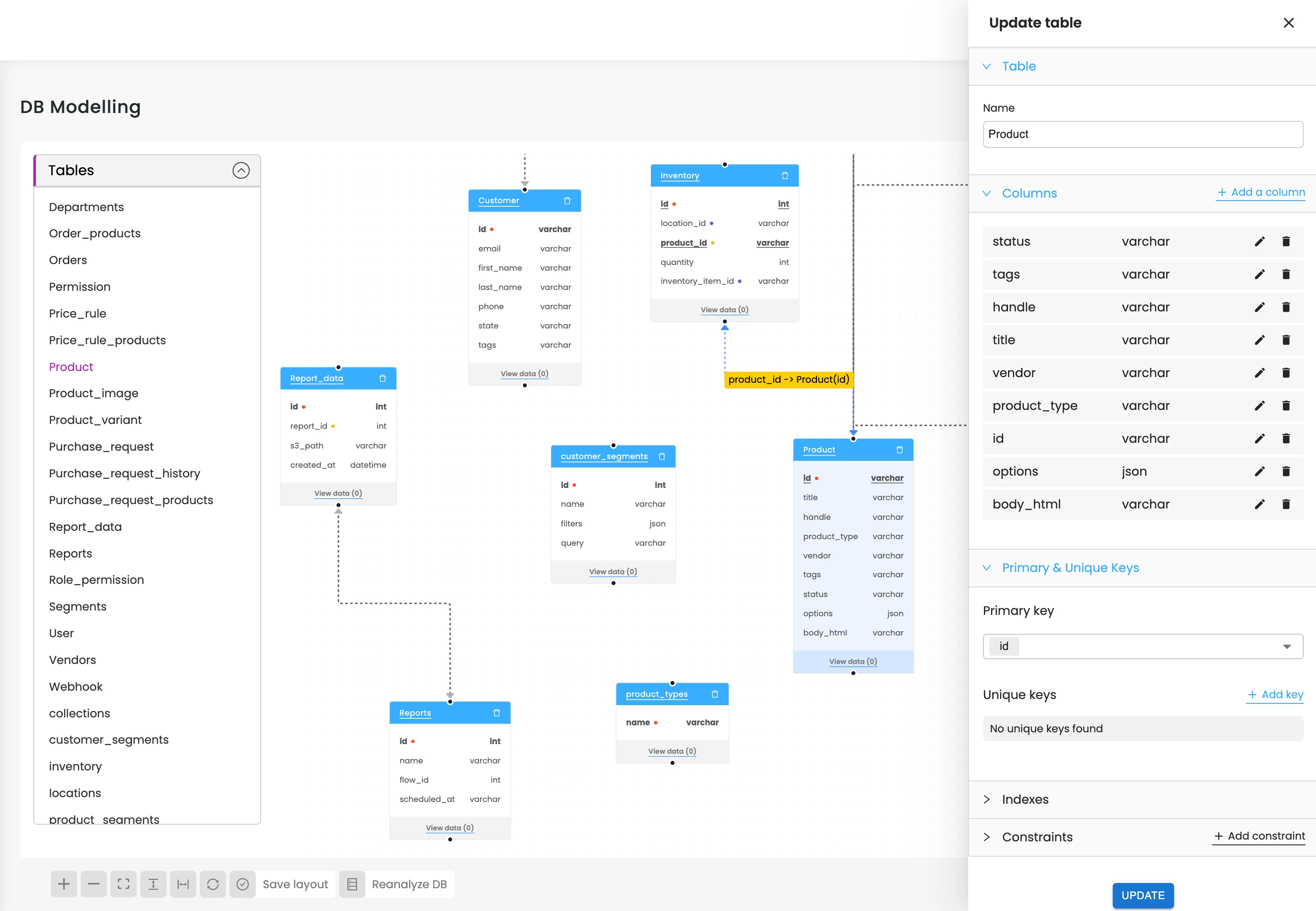

Expand
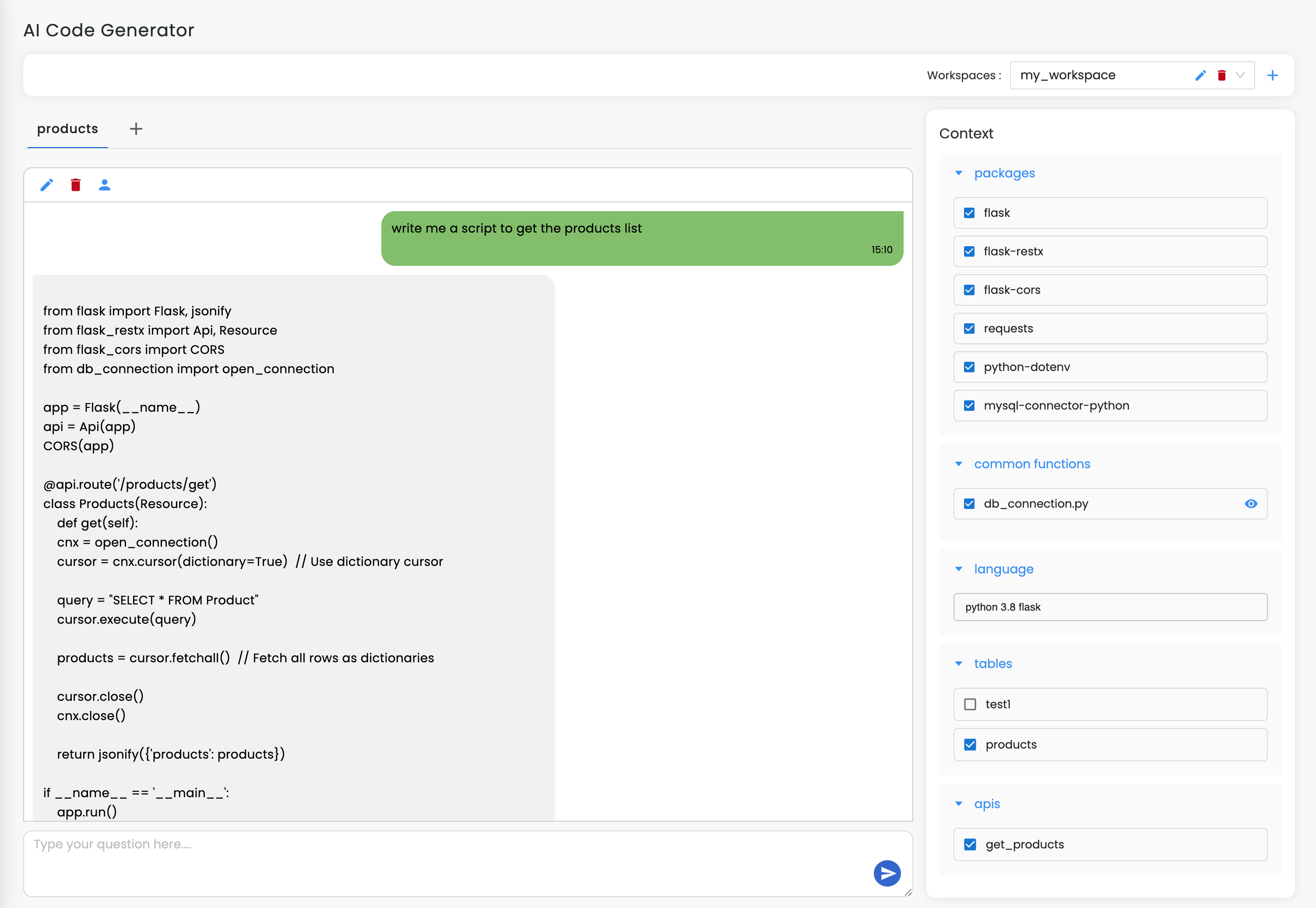

Expand


Expand


Expand


TESTIMONIALS
Real Stories, Real Results with Workik
Workik’s Ghost Code Generator cuts our theme setup time in half, essential for fast delivery.

Stacey Melton
Frontend Developer
The AI-generated Ghost templates sync effortlessly with our Gatsby projects. Fast and smooth.

Antonia Campbell
Full-Stack Developer
Ideal for Ghost setup. API endpoints, SEO, and templates are ready in minutes.

Denver Bentley
Junior Developer
What are some popular use cases of Workik’s AI-powered Ghost Code Generator?


Workik’s AI-powered Ghost Code Generator supports a variety of Ghost-based development tasks which include but are not limited to:
* Automated theme creation with Handlebars and Tailwind for custom branding
* API endpoint generation for dynamic content delivery
* Custom content structures and SEO settings tailored for Ghost
* Webhook-based routing setup and automated deployment
* Multi-platform content management for blogs, static sites, and apps
* Automated multilingual content setup for international websites
* Real-time preview configurations for testing content and design before publishing
* Integrated analytics and tracking setups within Ghost themes (e.g., Google Analytics)
* Dynamic image optimization and lazy loading for faster content delivery
What context-setting options are available in Workik’s AI for Ghost?


Workik provides a range of context-setting options tailored to Ghost projects, allowing users to:
* Import GitHub, GitLab, or Bitbucket repositories for direct code access.
* Specify front-end frameworks like Next.js or Gatsby for API integration.
* Add Ghost API keys, configure routing, and set theme preferences.
* Define theme preferences, including Handlebar templates and custom styling.
* Define SEO parameters and enable built-in performance optimizations.
How does Workik assist with Ghost CMS security features?


Workik can help automate the setup of security best practices for Ghost, including API key management, SSL configurations, and access control, enhancing your CMS’s security framework.
Does Workik support image optimization within Ghost themes?


Workik AI automates image optimization processes, including lazy loading, compression, and CDN setup, ensuring fast load times and optimized media delivery within your Ghost themes.
Can I use Workik to manage multi-platform content through Ghost?


Yes, Workik supports API-based distribution across websites, apps, and static sites, keeping your content delivery unified and efficient.
Can I configure Ghost for e-commerce purposes using Workik AI?


While Ghost is primarily a CMS, Workik AI can help configure content structures and API integrations for showcasing products, linking to external stores, and embedding e-commerce widgets, making it suitable for content-driven e-commerce.
Can Workik help integrate Ghost CMS with email marketing tools?


Workik AI can help embed email signup forms and configure integrations with platforms like Mailchimp or ConvertKit, enabling seamless email capture and engagement directly within Ghost.
Generate Code For Free

Ghost CMS: Questions and Answers
Ghost CMS is an open-source, headless content management system built on Node.js, optimized for professional publishing and fast content delivery. It offers a REST API, Handlebars templating, and SEO-ready features, ideal for blogs, news sites, and content-driven platforms.
Commonly used tools in Ghost CMS development include:
Languages:
JavaScript, Handlebars
Frontend Frameworks:
Next.js, Gatsby, React, Vue.js
APIs:
Ghost REST API
Libraries:
Axios, Ghost Content SDK
Deployment:
DigitalOcean, Vercel, Heroku
Testing:
Postman, Jest, Cypress
Styling:
Tailwind CSS, Bootstrap
Popular use cases of Ghost CMS include but are not limited to:
Blogging:
Quick, SEO-friendly blogs with custom themes.
Publishing:
Efficient content workflows for news and media sites.
Headless CMS:
API-first for delivering content across multiple platforms.
Portfolio Sites:
Custom themes for creatives to showcase work.
Multi-Platform Publishing:
Centralized control for content distribution to various front ends.
Ghost CMS expertise opens roles like CMS Developer, Full-Stack Developer, Content Engineer, and Site Reliability Engineer, involving theme development, API integration, custom routing, and automated deployments.
Workik AI enhances Ghost CMS workflows by:
Theme Generation:
Automating Handlebars theme creation.
API Setup:
Configuring Ghost API endpoints for dynamic content.
Component Building:
Creating reusable components for Next.js and Gatsby.
Automated Deployment:
Deploying to platforms like Vercel with real-time sync.
Content Structuring:
Generating organized content models.
SEO & Performance:
Adding SEO settings and optimizations like lazy-loading.
Database Management:
Automating SQLite or MySQL setup and migration.
Refactoring & Optimization:
Streamlining code structure and efficiency to enhance maintainability and performance.
Debugging Support:
Providing AI-driven debugging suggestions to improve code quality.
Webhook Automation:
Setting up webhooks for syncing updates across platforms.
Explore more on Workik
Get in touch
Don't miss any updates of our product.
© Workik Inc. 2025 All rights reserved.

